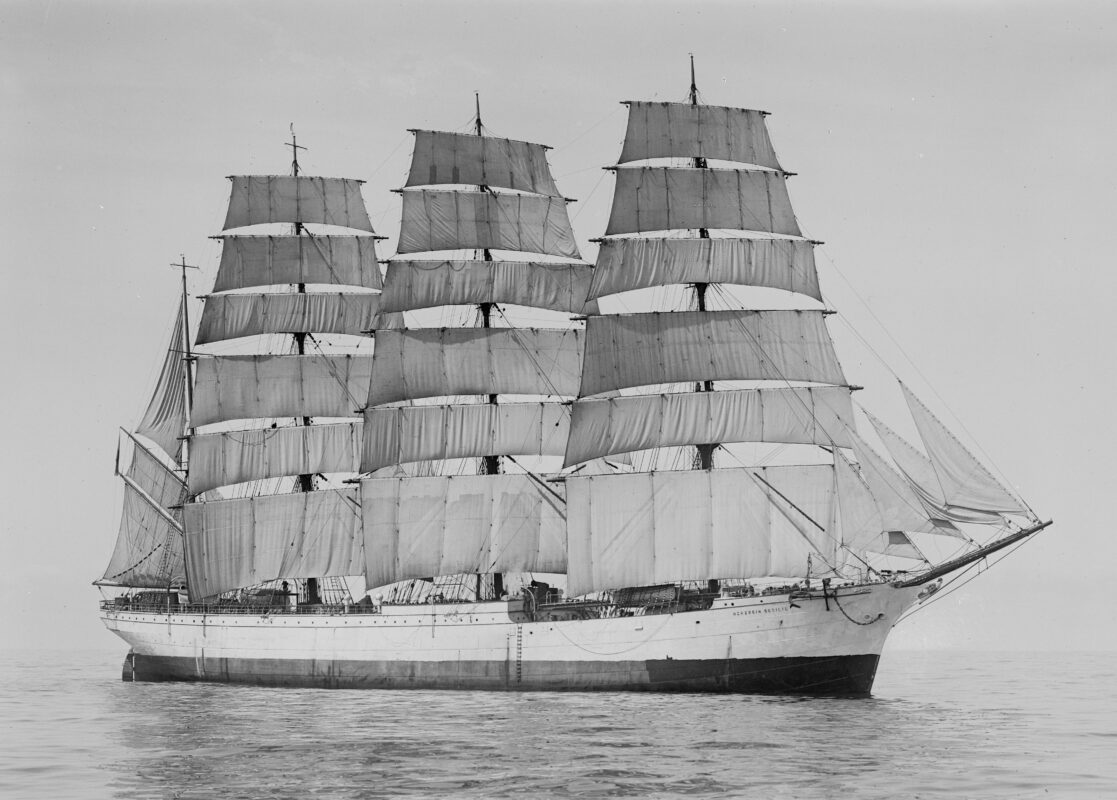Gustaf Erikson
Herzogin Cecilie
The origin of the legendary flagship: Herzogin Cecilie
If we think of the classic era of seafaring, known as the “Sail Age,” one name stands out: Herzogin Cecilie. This four-masted sailing ship, named after the German Crown Princess Cecilie of Mecklenburg-Schwerin, has gone down in history. Many consider the Herzogin Cecilie one of the most magnificent and fastest “Tall Ships” ever to sail the seven seas.
The early mission: Training and transportation
In 1902, Herzogin Cecilie was given an important role. It was the North German Lloyd company that commissioned the ship. The goal was to serve as a training ship for young, ambitious German cadets. The ship was built by Rickmers Yard in Bremerhaven. With solid steel construction and a cargo capacity of over 4,000 tons, it was excellently prepared for long, transatlantic voyages.
A ship of trade and discovery
Herzogin Cecilie quickly became famous for her successful trade voyages. It transported German goods, such as tools and machinery, to different parts of the world. When it returned, it loaded grain or nitrates from exotic places like South America, San Francisco, and Australia. But everything came to a halt when the First World War broke out in 1914. After the war, its ownership changed to France, but it did not remain there for long.
Part of the mighty heritage of the Åland fleet
During this period, Gustaf Erikson, an influential Ålander, began to build up his fleet of sailing ships. A chance encounter with Herzogin Cecilie at Ostend in 1920 led Erikson’s commodore master, Captain de Cloux, to purchase the vessel for £4250. The ship continued its educational mission and trained sailors not only from Finland but also from Sweden, Norway, Estonia, Germany and Great Britain.
A record holder at sea
Even before Gustaf Erikson took over, Herzogin Cecilie had a reputation for being a fast and seaworthy ship. It could reach speeds of up to 21 knots and had won the prestigious “Grain Race” no less than four times before 1921. Under Erikson’s ownership, the success story continued, with four new victories in the same competition.
A tragic end but a legacy that lives on
But it all came to an abrupt and tragic end on April 25, 1936. In dense fog Herzogin Cecilie ran aground on “Ham Stone Rock”. Many pictures documenting this tragic event can be seen in the link below. Although the majority of the ship was lost, its legacy lives on. You can see artefacts and the meticulously restored captain’s saloon at the Åland Maritime Museum.
More information


